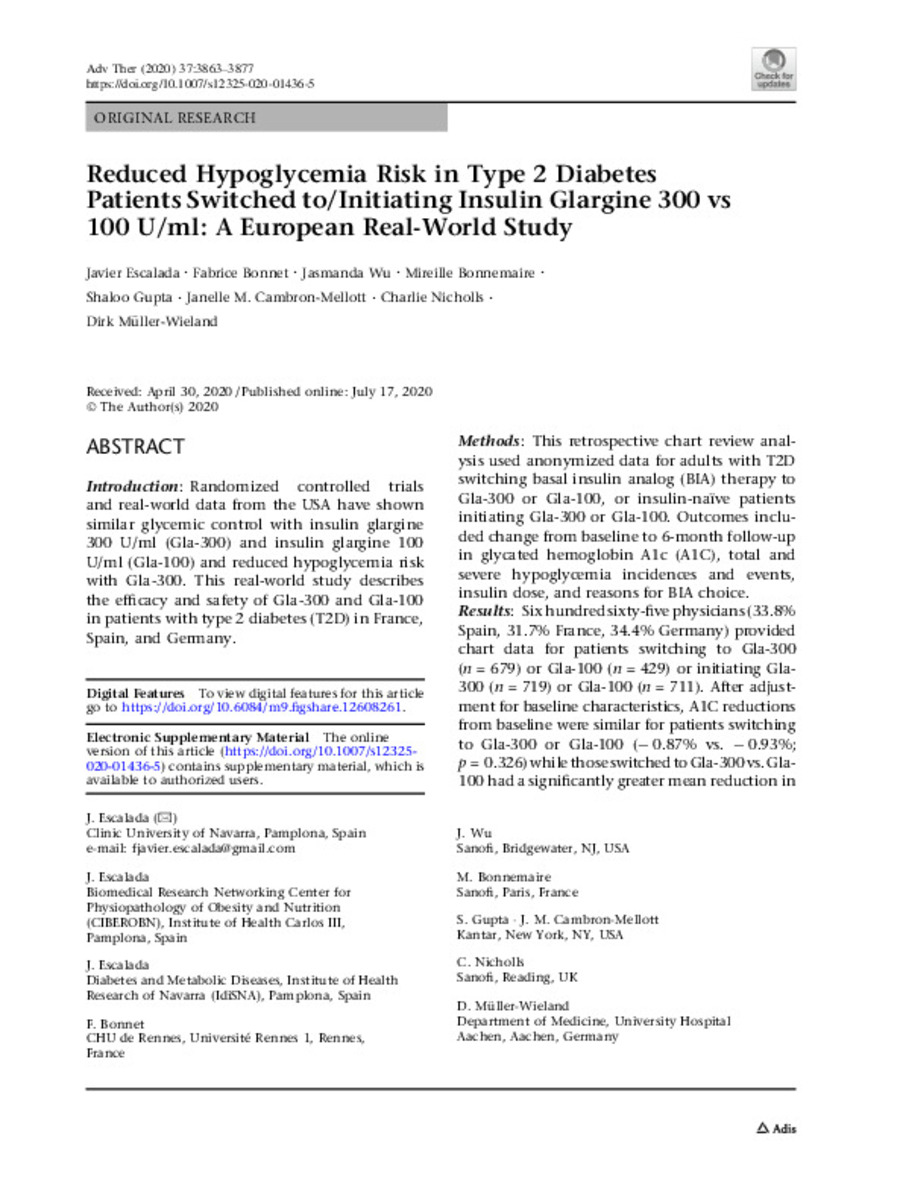Reduced hypoglycemia risk in type 2 diabetes patients switched to/initiating insulin glargine 300 vs 100 U/ml: A european real-world study
Palabras clave :
Diabetes mellitus
Hypoglycemia
Insulin glargine
Type 2
Fecha de publicación :
2020
Editorial :
Springer link
Nota:
This article is licensed under a
Creative Commons Attribution-NonCommercial 4.0 International License, which permits
any non-commercial use, sharing, adaptation,
distribution and reproduction in any medium
or format, as long as you give appropriate credit
to the original author(s) and the source, provide
a link to the Creative Commons licence, and
indicate if changes were made. The images or
other third party material in this article are
included in the article’s Creative Commons
licence, unless indicated otherwise in a credit
line to the material. If material is not included
in the article’s Creative Commons licence and
your intended use is not permitted by statutory
regulation or exceeds the permitted use, you
will need to obtain permission directly from the
copyright holder. To view a copy of this licence,
visit http://creativecommons.org/licenses/bync/4.0/.
Cita:
Escalada, J. (Javier); Bonnet, F. (Fabrice); Wu, J. (Jasmanda); et al. "Reduced hypoglycemia risk in type 2 diabetes patients switched to/initiating insulin glargine 300 vs 100 U/ml: A european real-world study". Advances in therapy. 37 (9), 2020, 3863 - 3877
Aparece en las colecciones:
Estadísticas e impacto
0 citas en

0 citas en

Los ítems de Dadun están protegidos por copyright, con todos los derechos reservados, a menos que se indique lo contrario.







